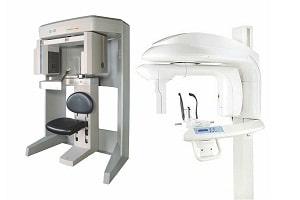Dental Cone Beam Purchasing Guide: How to Choose the Right Machine for Your Practice
The number of dentists that are investing in dental cone beam (CBCT) systems is increasing, and you may be one of the many dentists or dental professionals that is considering upgrading your practice’s imaging equipment. Three-dimensional imaging will allow your practice to expand its service offerings, retain existing patients and attract new ones.

However, CBCT systems are sizable investments that require proper planning and investment. Additionally, there are many reputable manufacturers and products in the CBCT market today, so it can be tough to choose the right machine. However, focusing on the right features that are most important to your practice can help you make a confident investment.
To help focus on the most important features of a CBCT machine, answer these five questions:
● What do I need in a CBCT system and how will it be used?
● How much space do I have to dedicate to this machine?
● Is the 3D imaging software compatible with my current system?
● Will I get reliable support and warranty coverage?
● Am I getting the best value?
Clinical Applications
With the in-house three-dimensional imaging capabilities of a dental cone beam system, your practice will have increased clinical data to more effectively plan procedures such as dental implants, endodontics, orthodontics, sleep and sinus studies, TMJ, and more. The information gained from CBCT scans prior to these procedures is invaluable and quickly becoming the standard of care.
Your answer to the first question above will help you narrow down CBCT options, and the procedures you plan on offering will help you determine the necessary field of view. The three general categories of FOV are small, medium, and large.
● Small FOV machines typically capture scans 5x5cm or smaller. A small (or focused) cone beam is a great choice for single implants or endodontic procedures where 3D imaging of a single tooth or quadrant is sufficient.
● Medium FOV cone beam systems are typically either 8x8cm or 10x10cm. They are adequate for most applications and allow you to capture most of the essential anatomy.
● Large FOV systems range from 10x16cm up through 23x17cm and are best for capturing the majority of the cranium in a single scan. Large FOV systems are ideal for orthodontic procedures, oral surgery, sleep studies, and other craniofacial procedures beyond the dentition.
Also be aware that large FOV systems can capture smaller FOV scans to reduce radiation exposure as needed, helping you keep compliant with the ALARA principle.
Practice Space
Once you’ve decided on a FOV size, you’ll need to envision the space a dental cone beam system will occupy in your office. If you’re limited in space, your choices will also be limited. Fortunately, most CBCT machines take up approximately the same amount as a traditional panoramic machine. Many also have both 2D and 3D sensors, offering all-in-one functionality. This means you may be able to replace your current panoramic machine with a new CBCT system, requiring no additional space.
Software Compatibility
For 3D volumes, cone beam systems typically include their own software for acquisition and treatment planning. The majority of CBCT machines export the same raw data in the Digital Imaging and Communications in Medicine (DICOM) format, which can be opened in various viewing and treatment planning software programs.
Be mindful of the system you’re currently using so you can ensure the CBCT system you eventually purchase will be compatible. Most of the time, with the right purchase you can fit a CBCT system into your existing workflows.
Support and Warranty
Considering the sizable investment made in the purchase of a dental cone beam system, you don’t want poor support to get in the way of using your new system. You’ll want the peace of mind that comes with knowing your system is covered by readily available support and a comprehensive warranty. This, along with where you purchase, is a critical consideration in which CBCT is best for you.
Speak to a sales representative and ask about support and warranty programs. Then cross-reference by checking online reviews from other dental professionals. You may also need to consider your location, as some sellers may or may not provide coverage in your area. Figure out what comes with your purchase (and what doesn’t) so you can be confident when you make a decision.
Price
If you’re purchasing an in-house CBCT system to expand your service offering, often you’ll be able to recoup the cost of your investment quickly. However, you must still be prepared with budgeting and financing.
Remember, as the size of the FOV increases, so will the price of the machine. However, the price of systems tends to drop with an increase in competition. Today’s market offers a range of prices on CBCT machines.
By assessing all of the features mentioned above, you can help ensure that your practice will make the best possible investment and get the most value from it.
Save 30%-50% on Certified Pre-Owned Dental Cone Beam Systems at Renew Digital
Dentists and dental professionals looking to make an investment in dental CBCT systems can trust the experts at Renew Digital to find the right machine for their needs at a great price.
They offer a wide range of certified pre-owned CBCT systems at anywhere from 30% to 50% off new list prices to help their customers maximize the value of the investment.
Contact them today at 888-246-5611 to speak with a sales representative. Their staff is highly knowledgeable and can help you narrow down your CBCT options, all of which are backed by comprehensive support and warranty programs.
For more information about Planmeca Promax and Orthopantomograph Op300 Please visit: Renew Digital, LLC.
